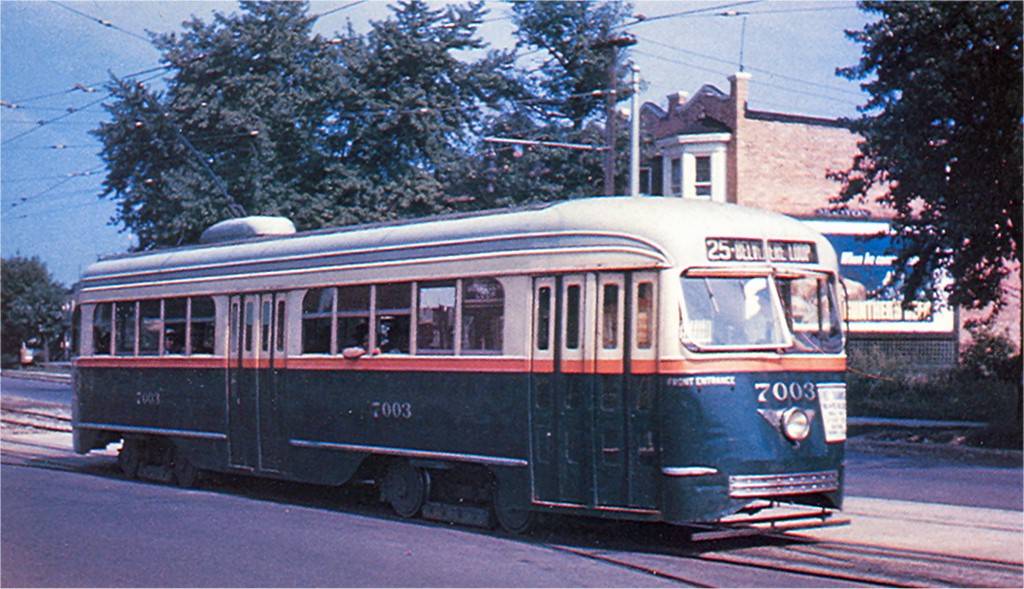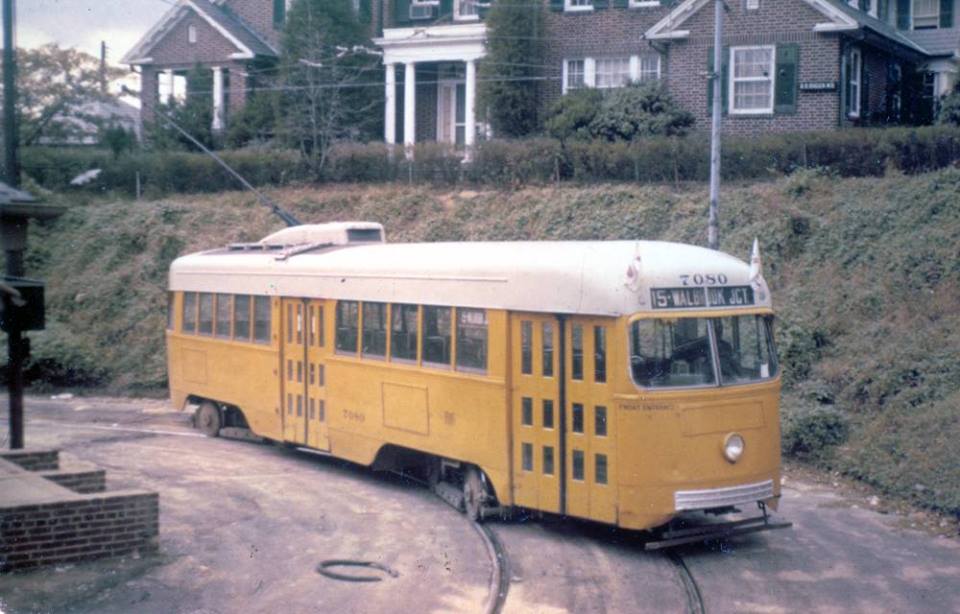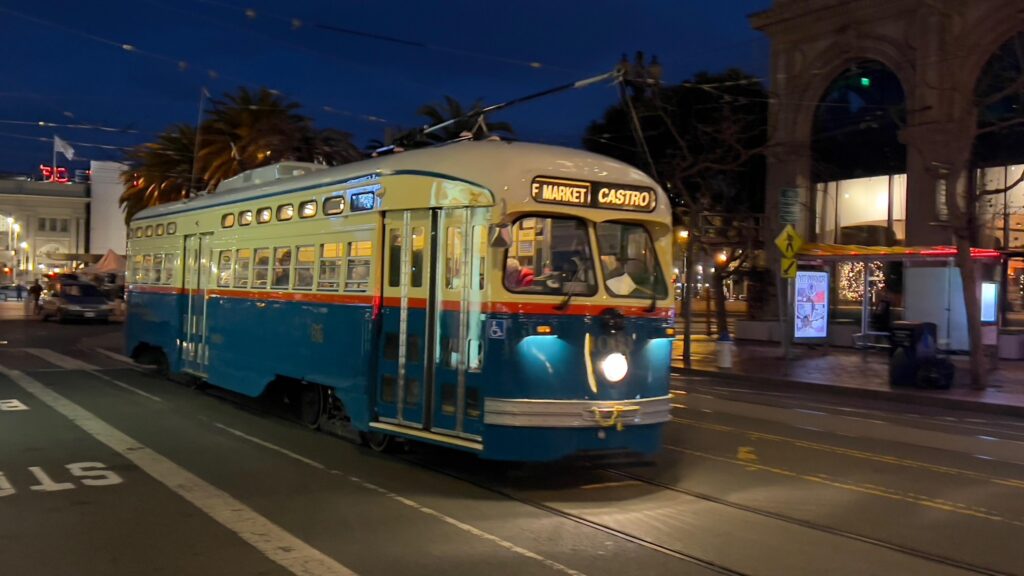This car is painted to honor Baltimore, which ran PCC streetcars from 1936 to 1963.
One of the first cities to operate PCCs, Baltimore began with an order of 27 in 1936. The privately owned operator, Baltimore Transit Company (BTC) subsequently placed seven additional orders for the streamliners, eventually acquiring 275 PCCs. They made up just over a quarter of BTC’s huge streetcar fleet, which also included a variety of old-fashioned cars and 150 lightweight high-speed Peter Witt cars ordered in 1930.
The Baltimore system included some spectacular trackage, including lots of private right-of-way, viaducts, and a drawbridge. PCCs served all of it, in part because BTC would mix PCCs in with older streetcars on every line. Most companies tried to operate complete lines with PCCs to take advantage of the streamliners’ quicker acceleration. In Baltimore, motormen had to rein in their PCC “steeds” lest they catch up to the “old plug” wooden streetcar filling the run ahead of them.

National City Lines bought up BTC stock during World War II, assuming operational control in late 1945. Soon after, many of BTC’s 29 streetcar lines started converting to buses (made by NCL owner General Motors). While it is true that 16 of those lines used antique wooden streetcars and had worn out tracks and car barns, it is also true that BTC cancelled an order for 100 multiple-unit PCCs in 1946. It is true as well that flight from the inner city to suburbs proceeded faster in postwar Baltimore than in most other U.S. cities.

These factors combined to doom Baltimore’s streetcar system. Surviving PCCs were painted in a simpler yellow livery. After steady attrition, the end came on November 3, 1963, when car No. 7407 (now at the Baltimore Streetcar Museum) limped into the barn to close out Baltimore’s PCC era.
When first restored for F-line service in 1995, Muni PCC Car 1063 was painted in the second, simpler Baltimore livery, used during the term of Baltimore Mayor Tom D’Alesandro, Jr., whose daughter Nancy rode cars like this as a child. She grew up, moved to San Francisco, and is today Speaker Emerta of the House of Representatives Nancy Pelosi.

Muni PCC Streetcar 1063 emerged from its 2017 rebuilding painted in the original Baltimore Transit livery of Alexandria Blue (a teal shade) and Picador cream, with an orange stripe and a Pearl gray roof. This striking livery was the result of a contest sponsored by the Maryland Institute of Art. The blue shade does not quite match the Baltimore original; when the car needs a full repaint, this will be corrected.
This car suffered serious damage on January 1, 2018, when a truck made an illegal turn in front of it, causing a collision. It returned to service in 2022.
 Originally built for
Originally built forPhiladelphia Transportation Company, Philadelphia PA, 1948 (as car No. 2096)
Acquired by Muni from
Southeastern Pennsylvania Transportation Authority, Philadelphia PA, 1992
Builder
St. Louis Car Co.
Restored by
Morrision-Knudsen 1993, Brookville Equipment Co. 2017
Seats
47
Weight
37,990 lbs.
Length
48′ 5″
Width
8′ 4″
Height
10′ 3″
Motors
4 Westinghouse 1432J
Trucks
B-2
Brakes
Electric
